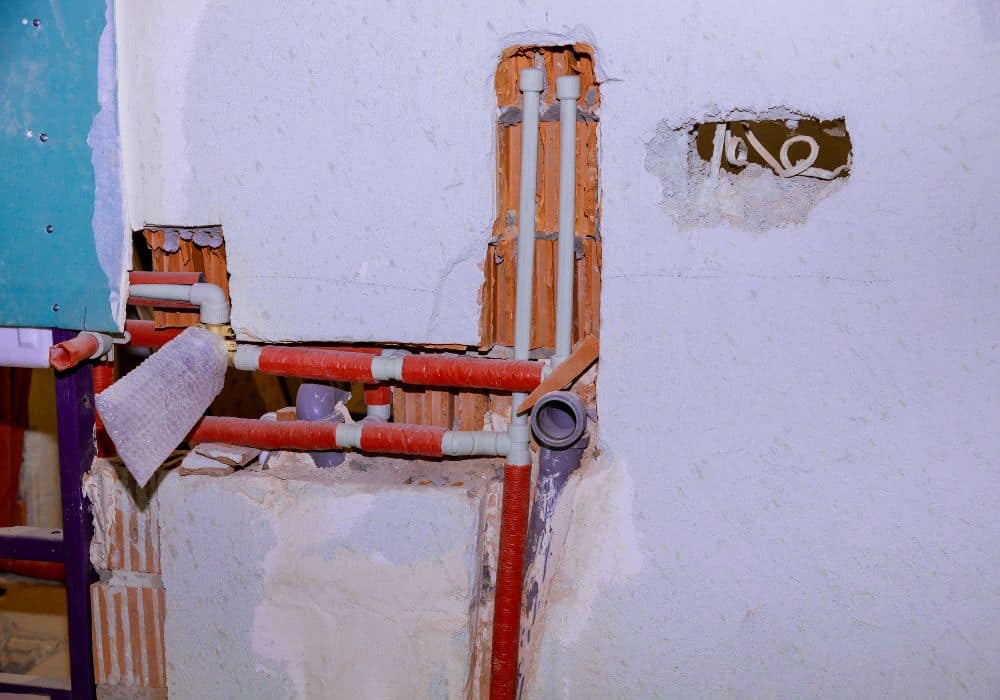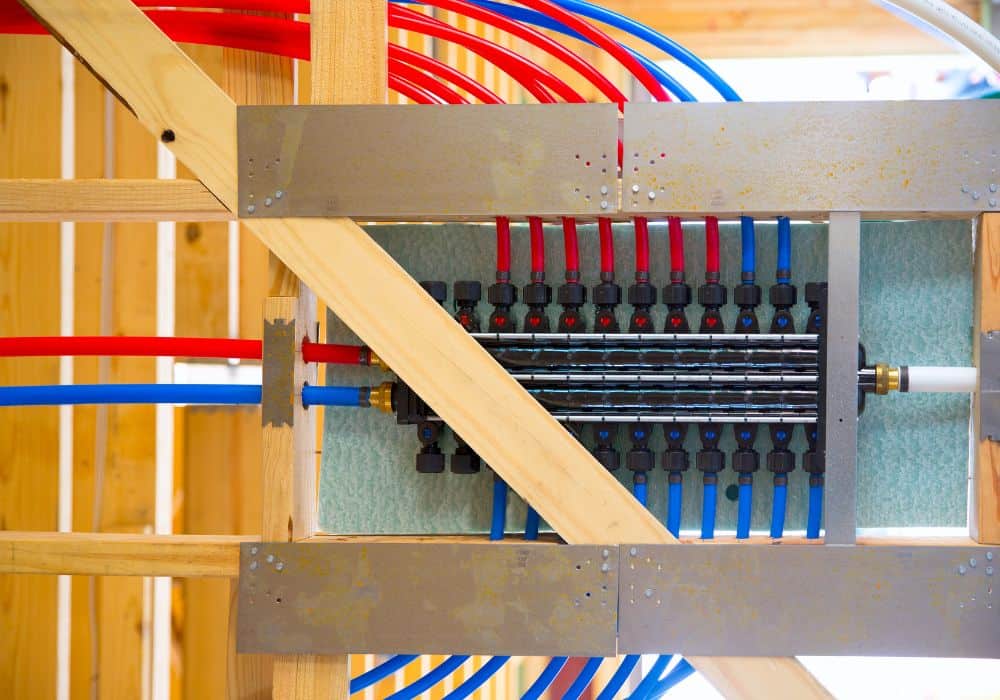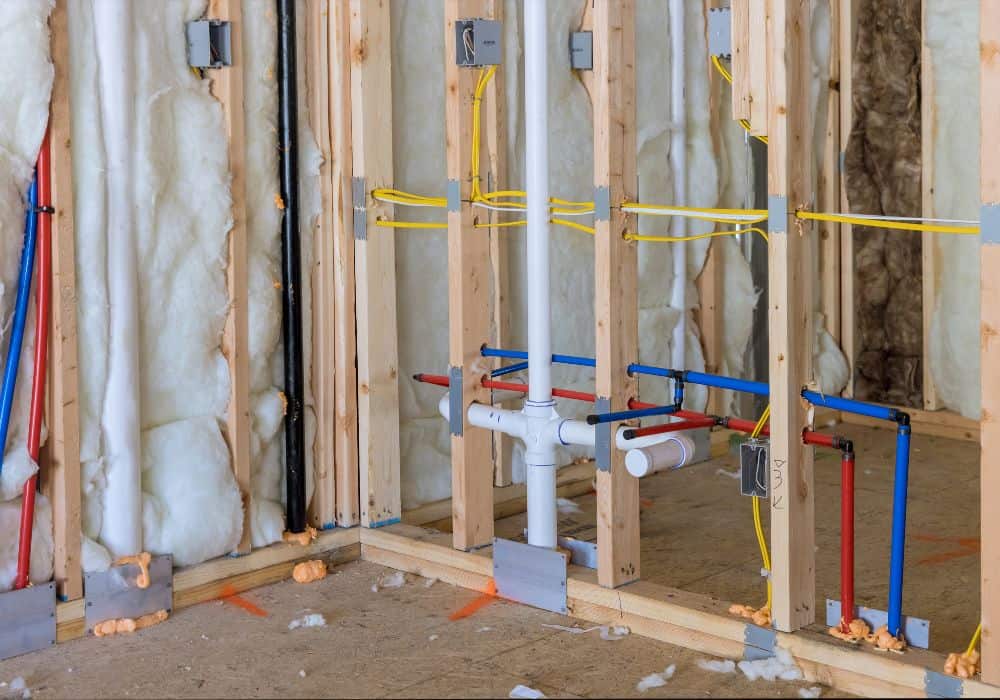Pipes are the veins and arteries of our homes, carrying essential things like water, heat, gas, and moving around. It’s easy to forget they’re even there, working silently in the background.
But when pipes break, you notice it immediately and try to repair and replace them in a blink. No doubt, if you’re reading this article, you’re looking for a quick, easy, and affordable solution to leak or breakage in your plumbing system.
But we’re here to help you find solutions. Today, we’re going to focus on two big players in the plumbing world; the versatile, valuable, and affordable plastic pipe, PEX, and the controversial Kitec piping.
Both of these frequently appear in homes across the world, and learning more about them can help you find potential solutions that can remedy any of your plumbing woes.
What is a Kitec Pipe?
Kitec piping has an unfortunate history. Sold initially from 1995 to 2007, it became an instant hit because of its low price point and promised to be more effective and efficient than traditional copper piping.
But sadly, as time has told, Kitec piping did not live up to its manufacturer’s promises or customer’s expectations. The first recalls of Kitec piping began in 2005 when people discovered the volatility of the pipe’s effectiveness.
There has been much debate over what went wrong with Kitec. Most people pin it to the high levels of zinc used in production, which reacted negatively to minerals carried in the pipe.
The pipe and all of its fittings quickly tarnished, and a build-up of zinc oxide caused massive blockages to water flow.
Additionally, layers of plastic and aluminum repeatedly expanded and contracted during high-temperature changes, like near hot water tanks. The result? The structure and stability of the pipe weakened considerably.
In 2007, the manufacturers of Kitec (IPEX) formally discontinued making the pipes. By 2012, following a class-action lawsuit, IPEX Inc. settled for $125 million.
How do you know if you have a Kitec pipe?
The easiest way of spotting them is by their color. Kitec pipes often were bright orange (hot water) and bright blue (cold water). They may also have the following brand names or logos on their side: Kitec, PlumbBetter, IPEX AQUA, WarmRite, Kitec XPA, AmbioComfort, XPA, KERR Controls, or Plomberie Améliorée.
Watch out for Kitec branded stickers on electrical panels, which will be bright yellow or neon colored. It goes without saying that if you have a Kitec pipe in your plumbing system, you need to replace it as soon as possible. If you find a Kitec pipe in your plumbing system, perhaps in an older house, it is in dire need of replacement.
What is a PEX Pipe?

PEX pipes, also known as cross-linked polyethylene, are very popular pipes sold around the world and used in our homes and workplaces. They can carry a variety of substances like water, cables, and sewage and can play a role in your heating and cooling systems.
It was invented in 1968 by German inventor Dr. Thomas Engel, and initially, the building industry was slow to take notice. But slowly, the pipes grew in popularity during the 1980s and 1990s because of their price and ease of installation.
Thankfully, PEX piping could deliver on its promises and is still a popular material used today. It has many advantages over other pipes. Because it is plastic, it does not require any soldering to install, making it a suitable material for novice plumbers.
And as plastic, it is mass-produced with a near unlimited variation in sizes, shapes, angles, lengths, and more. For that reason, PEX pipes can more than navigate around corners and obstacles in your home.
Comparisons: Kitec VS. Pex
The comparisons and contrasts between Kitec piping and PeX are extreme. On the one hand, Kitec promised a revolutionary change in plumbing, only to fall short of its goals. PEX, on the other hand, has continued to grow in popularity and has become a bonafide industry staple.
Let’s compare and contrast these two pipes so that you can decide on what materials you might replace and when.
1. Composition
Kitec and PEX are cross-linked polyethylene, which means they’re thermoplastic resins. You would think this would make Kitec an effective piping material, but as history has shown, it fell short.
The main weaknesses of Kitec piping are the brass fittings. The fittings reacted negatively to moisture and oxygen. The result? Intensive corrosion eventually would block up piping.
In stark contrast, a PEX pipe is cross-linked polyethylene without a layer of aluminum and brass additives. It has effective environmental and thermal resistance (up to 120°C. PEX also has increased strength and scratch resilience, and manufacturers can alter production to increase specific resistances relevant to the purpose of the pipe.
2. Cost
The cost of materials can be one of the most influential factors in deciding what type of replacement pipe you choose.
For Kitec piping, you need only look at the prices some Canadian and American families have paid to estimate the replacement cost of your system. Some families have said the total replacement of their Kitec plumbing ranged from $4,000 to $15,000.
Unfortunately, compensation has seemed to stop for families affected by Kitex pipes since January 2020. Consult with local authorities to see if there are any resources you might still qualify for.
Additionally, if you ever wanted to see your home with Kitec piping installed, this can dramatically affect the value sale. As of 2015, Ontario Real Estate Council requires that in the Seller Property Information Statement Forms, homeowners may need to declare and answer questions relating to the presence of Kitec piping.
In stark contrast, PEX piping is an affordable material to invest in. Depending on the size of your system, replacements can range from $1,500 to $8,000 for the average home.

3. Lifespan
Kitec piping sadly only has a lifespan of 10 years before it will show signs of breakage, corrosion, and structural damage like a burst. The pipes may not last that long if they’re in contact with particularly hard water with unusually high mineral content.
For this reason, Kitec pipes must be replaced on sight, as they can become damaged quickly, despite having the appearance of strength.
On the other hand, PEX pipes can last for over 50 years, making them an ideal replacement for any faulty plumbing. Couple this with their relatively cheap cost; they are an incredible investment to make for your home’s plumbing system. Once you install them, they will last a considerable time.
4. Temperature ranges
Despite Kitec pipes being advertised as suitable for home use, they again fell short of basic demands, including the maximum operating temperature of 180°F. This means if the pipe was near extreme or fluctuating temperatures, like near hot water tanks, separate hot water pipes, or water heaters. Fluctuating water temperature will lead to eventual distortion and breakage.
In comparison, PEX Pipes can go slightly further and withstand up to 200°F. This additional range can mean they’re better suited for radiant heating, carrying hot water, and featuring in residential fire sprinkler systems.
5. Legality
Because of both the class actions and the recall of Kitec pipes, you will not find any Kitec piping made from 1995 to 2007 in modern homes or workplaces.
You may discover them if renovating older homes and plumbing networks. You will not be able to replace these pipes with Kitec piping, instead using an alternative material.
On the other hand, PEX is a well-regulated piping material that follows strict regulations in both America and Europe.
- In America, for example, pipes must-have design specifications printed on their side for easy classification.
- In Europe, PEX pipes are separated by name depending on their ingredients.

Conclusion
The mention of Kitec pipes can leave a shudder in homeowners and plumbers alike. It was a story that was too good to be true, catching North America and Canada by storm.
While ambitious in their goals, the manufacturing and functionality of the pipes fell well below expectations, and their failure is a sore spot for many families still to this day.
But, every mistake provides a learning opportunity. Seeing how Kitec performed in corrosion and heating can teach us how to produce and maintain better standards in plumbing, especially with plastics.
PEX pipes have continued to be one of the world’s most popular and mass-produced piping. With additional resistances instilled in production, each pipe can survive above 50 years or more without question.
PEX piping also benefits from easy installation, allowing anyone of any skill to repair and install them without much fuss.
So when you place a PEX pipe, you can rest assured you won’t see it again for quite some time!
